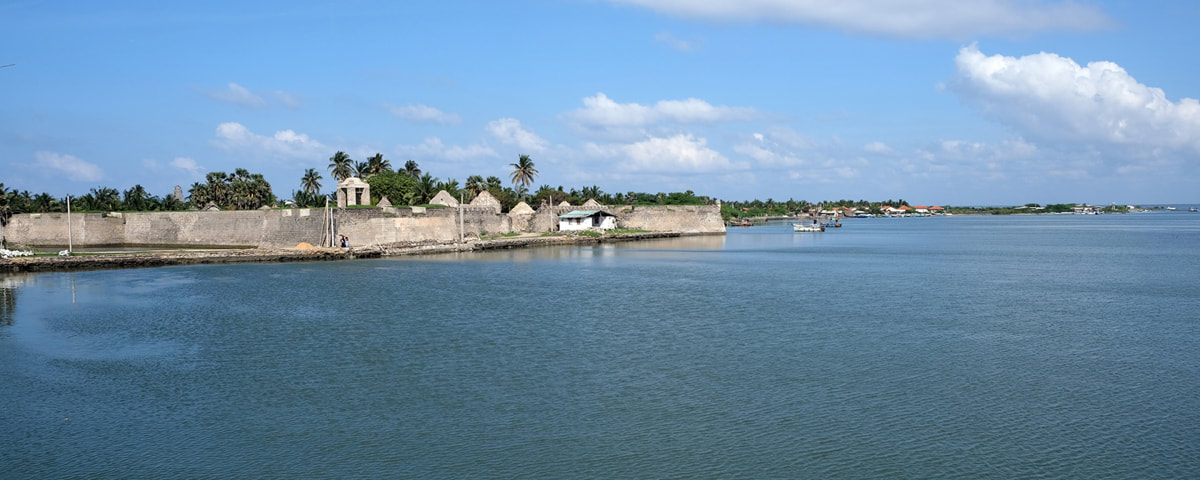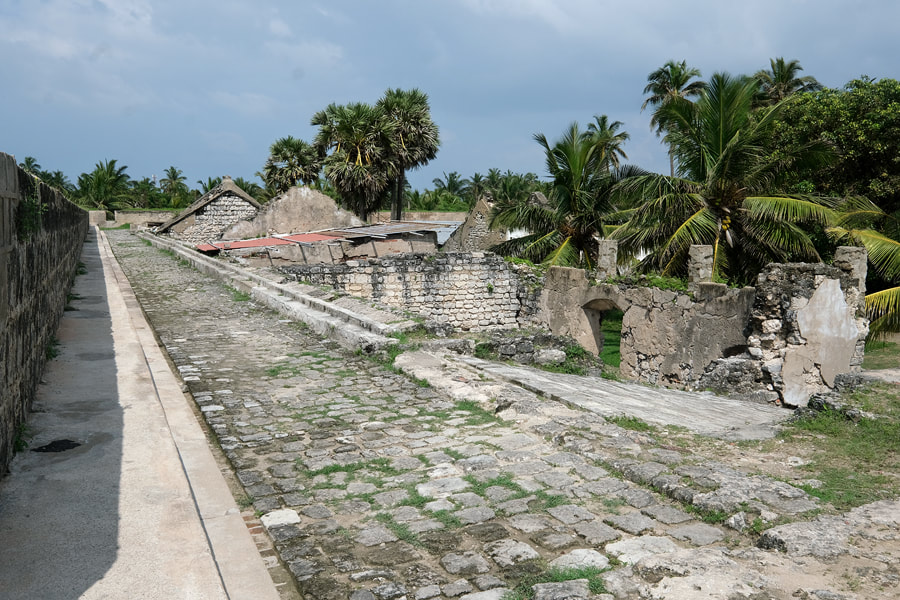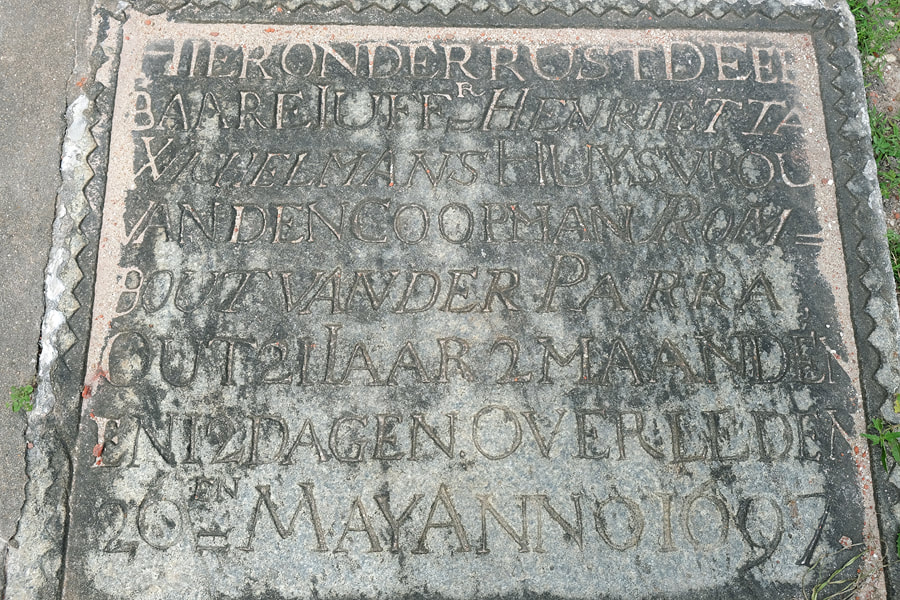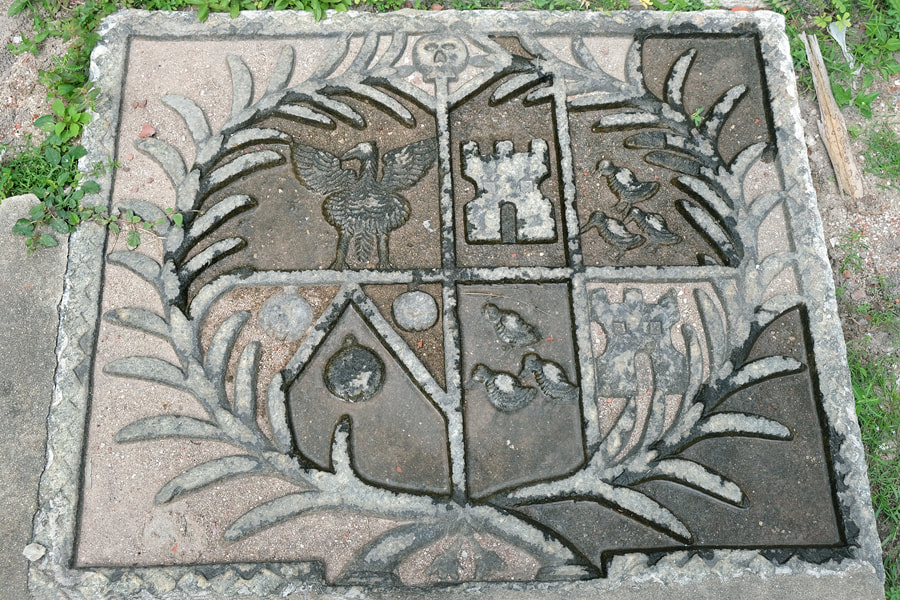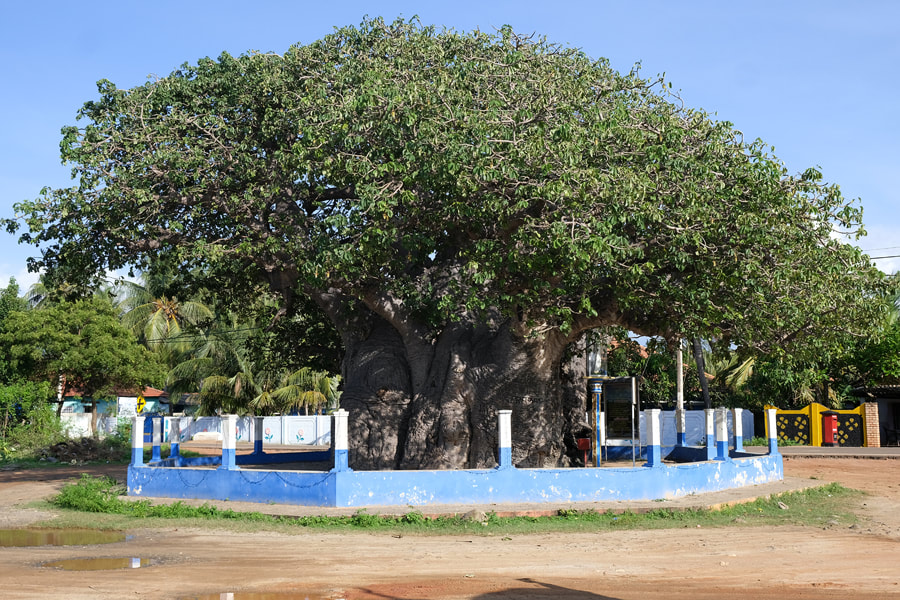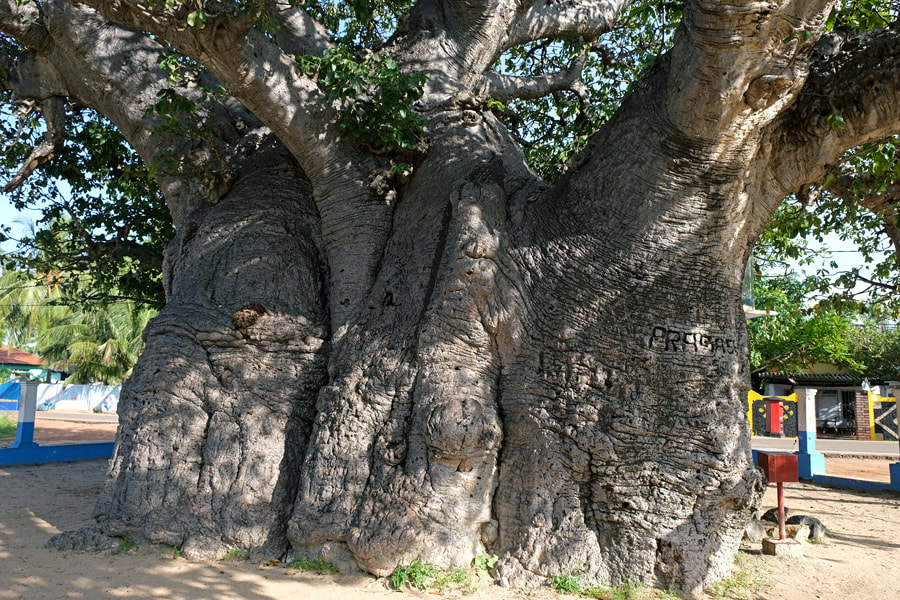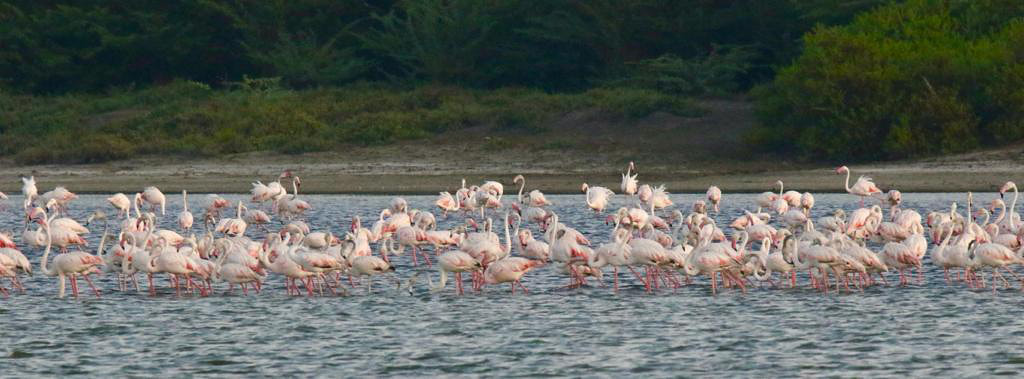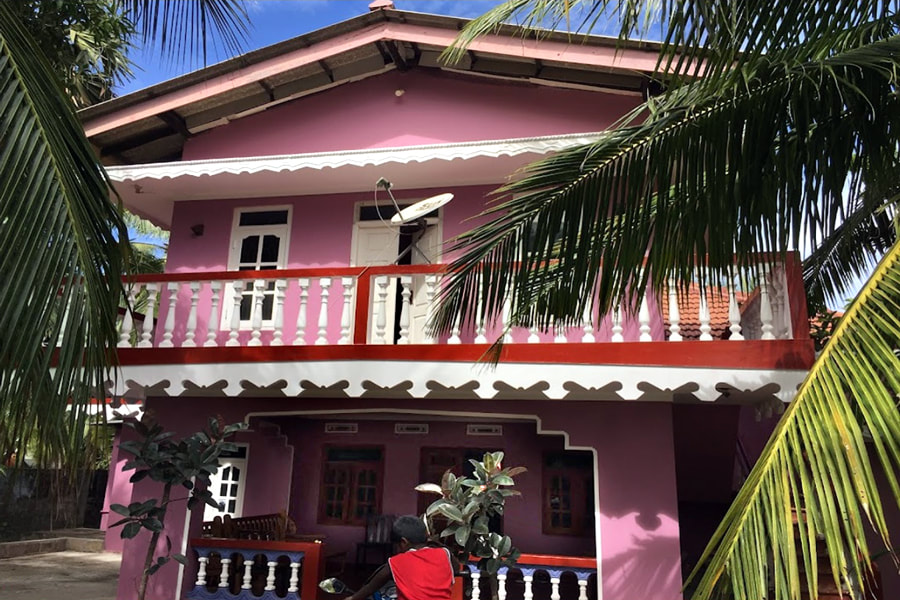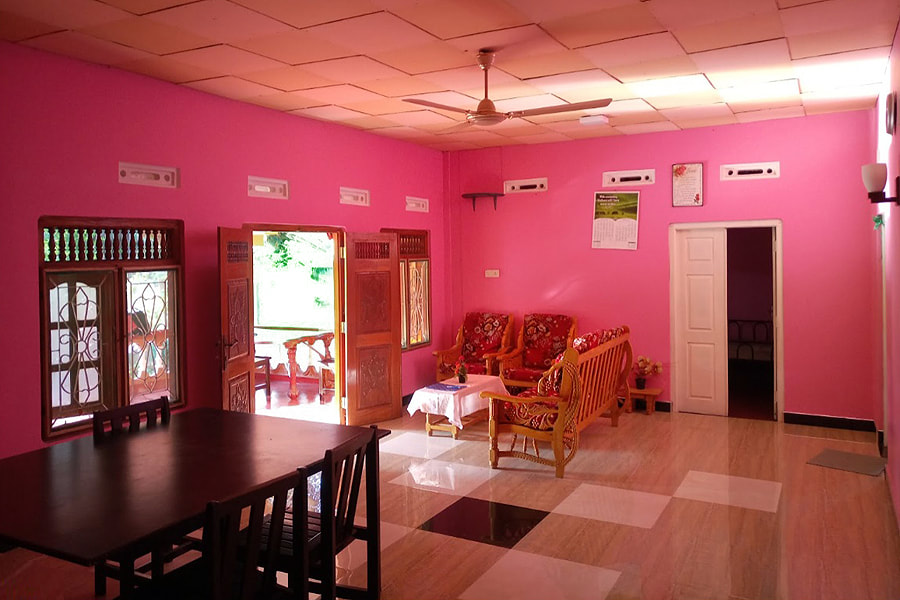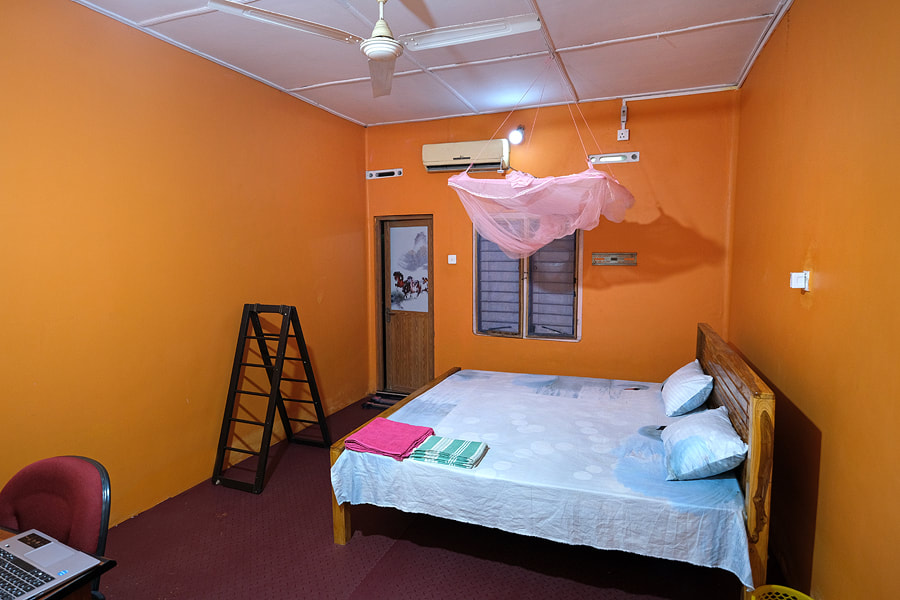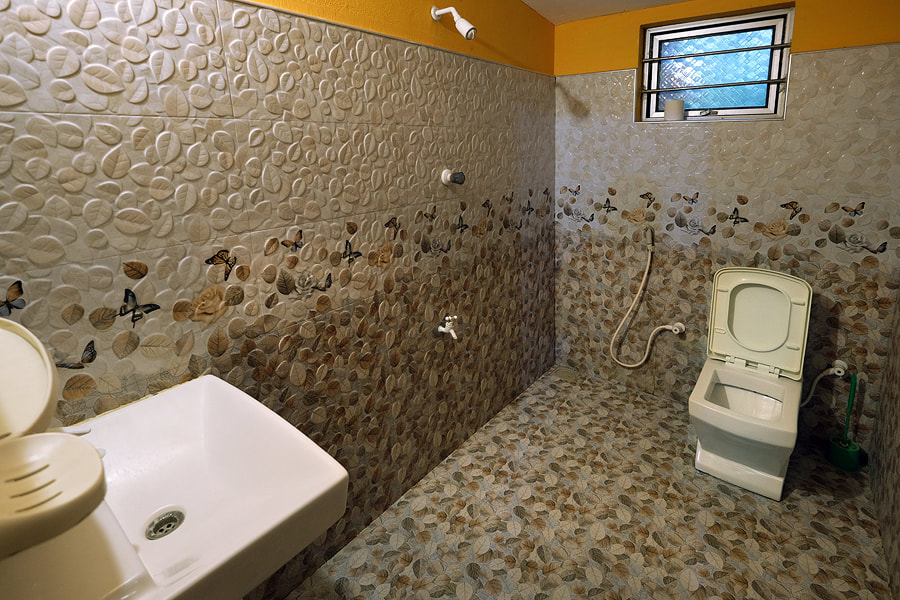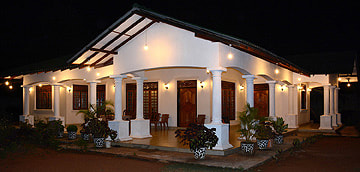„Mannar“ is the name of a city and an island and a district in Sri Lanka‘s Northern Province alike. Mannar District, covering 2000 square kilometers, is much larger than the Island of Mannar. The latter is 30 km long and up to 6 km wide, covering only 130 square kilometers. Distance from Colombo to Mannar Island ist 220 km, as the crow flies, but 320 km via main road.
Mannar Island is linked to the main island of Sri Lanka by a causeway. This 3.5 km long dam is crossed by the A14 highway which starts as a trunk road of A9 highway in Medawachchiya, 20 km to the north of Mihintale. A trunk railway line starts from Medawachchiya, too, terminal station is the pier. Severely damaged during the civil war, the rail tracks were renovated afterwards. A first segment, then leading to Madhu, was already reopened in 2013.
Short History of Mannar
In ancient times, Mannar was renowned for pearl fishing, which was jointly controlled by the kings of Anuradhapura and their closest neighbours, the Pandya kings in the very south of India. Competing with the Persian Gulf, the Gulf of Mannar earned a reputation as one of the world's two sources of highest quality pearls. Pearls, besides gems and spices, were actually among the main export articles of southern India and Sri Lanka during the heydays of the Roman Empire. Instead of natural goods, Roman silver and gold coins were received in exchange. Mannar is recorded in the „Periplus of the Erythraean Sea“, which was a report on Indian Ocean harbours composed by an anonymous author, who had travelled to India.
During the 14th and 15th century Mannar, still lucrative as a center of pearl fishery, came under the rule of the Jaffna kingdom for most of the time, though it was occupied by forces from Kotte for short periods.
The Portuguese soon after their arrival in the Indian Ocean took control of the pearl fishery by sending a small naval force in 1513. In order to being able to extract revenue from the pearl trade they had to combat the Jaffna rulers and their ally, the Samodrin of Calicut. For securing the pearl trade the Portuguese also converted a large number of pearl fishers from the Parava caste to Roman Catholicism. Cankili I (1519-1561), who reestablished a strong rule in Jaffna, demanded that his subjects on Mannar renounce their new faith. When they refused, the Tamil king put 600 of them to death, which provoked the later Portuguese attack on Jaffna and thereby the end of domestic rule in northern Sri Lanka.
During the 14th and 15th century Mannar, still lucrative as a center of pearl fishery, came under the rule of the Jaffna kingdom for most of the time, though it was occupied by forces from Kotte for short periods.
The Portuguese soon after their arrival in the Indian Ocean took control of the pearl fishery by sending a small naval force in 1513. In order to being able to extract revenue from the pearl trade they had to combat the Jaffna rulers and their ally, the Samodrin of Calicut. For securing the pearl trade the Portuguese also converted a large number of pearl fishers from the Parava caste to Roman Catholicism. Cankili I (1519-1561), who reestablished a strong rule in Jaffna, demanded that his subjects on Mannar renounce their new faith. When they refused, the Tamil king put 600 of them to death, which provoked the later Portuguese attack on Jaffna and thereby the end of domestic rule in northern Sri Lanka.
Mannar City
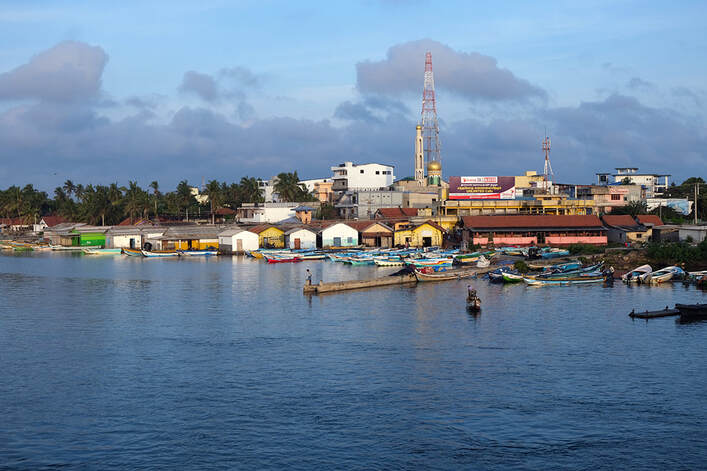
The center of Mannar City, which is a district capital as mentioned above, is the large bus station. The town's main attractions for tourists are the fishing port and the nearby fish market and several colourful mosques and churches and Hindu Kovils. Mannar city is actually crowded with Hindu temples and Muslim mosques. However, most sacred buildings in town are Roman Catholic churches. With more than 40 % of the population, the proportion of Roman Catholic Christians is higher in Mannar District than in any other district of Sri Lanka. For comparrison, the percentage of Catholics in the entire island nation is only 7%. Mannar city is the bishop‘s see of the Mannar diocese. With an estimated 60%, the percentage of Christians in the devisional secretariat of Mannar Island is yet higher than in other parts of Mannar district. There is only one divisonal secretariat with a higher rate (Negombo 65%).
Dutch Fort of Mannar
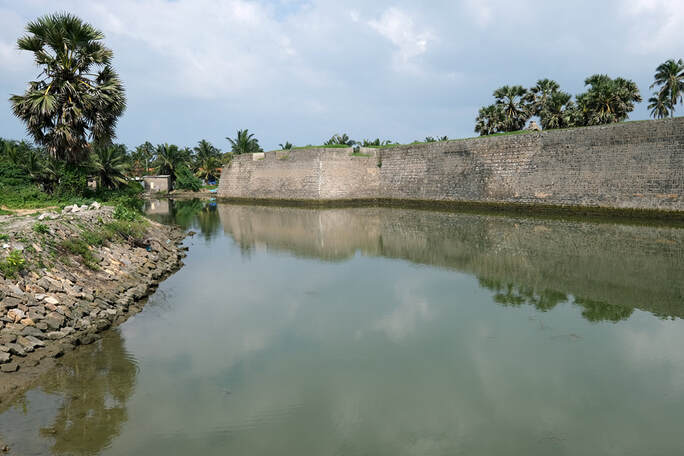
The most noteworthy place of interest is the Dutch Fort.
It were the Portuguese who in 1560 built a first fort at this strategic location in Mannar. It‘s situated close to the westernmost point of the island, facing the mainland and protecting the narrow strait. Mannar Fort surrendered to the Dutch on 22 February 1658, two years after the fall of Colombo Fort. In 1996, the Dutch rebuilt and enlarged the fortress to its current size.
On 5 October 1795 they surrendered to the British, after the British had forcefully occupied Fort St. Frederik in Trincomalee in August and before the fall of Colombo in January. Jaffna and Batticaloa and Jaffna had surrendered to the British already in September.
Mannar Fort, surrounded by a moat, has four bastions at the four corners. The bastions and ramparts are intact, whereas the other buildings within the fortified area have not been properly maintained. But remnants of Dutch emblems and tombstone inscriptions can still be seen. Mannar Fort is currently a base of Sri Lankan security forces.
It were the Portuguese who in 1560 built a first fort at this strategic location in Mannar. It‘s situated close to the westernmost point of the island, facing the mainland and protecting the narrow strait. Mannar Fort surrendered to the Dutch on 22 February 1658, two years after the fall of Colombo Fort. In 1996, the Dutch rebuilt and enlarged the fortress to its current size.
On 5 October 1795 they surrendered to the British, after the British had forcefully occupied Fort St. Frederik in Trincomalee in August and before the fall of Colombo in January. Jaffna and Batticaloa and Jaffna had surrendered to the British already in September.
Mannar Fort, surrounded by a moat, has four bastions at the four corners. The bastions and ramparts are intact, whereas the other buildings within the fortified area have not been properly maintained. But remnants of Dutch emblems and tombstone inscriptions can still be seen. Mannar Fort is currently a base of Sri Lankan security forces.
During many years of the two and a half decades of civil war, parts of Mannar were under control of the separatist rebel army. Thousands of Muslims, called „Moors“ in Sri Lanka, were driven out by the LTTE in 1990, though they were native inhabitants of Mannar and also Tamil speakers. The same fate was shared by Muslim and Buddhist minorities in all other parts of rebel-held territory. After the end of LTTE control, particularly after the end of the civil war, many Muslim families returned to their homes on Mannar Island and now again the Muslim community forms a large part of the population.
Pallimunai Baobab Tree near Mannar City
Apart from the Dutch Fort, Mannar town is known for its gigantic Baobab tree. It's called the „Pallimunai Baobab tree“ due to its location in the village of the same name. In Sri Lanka, Mannar Island is the region where most of these trees of African origin grow. Mannar has about 30 Baobab trees, compared to roughly 20 on the main island of Sri Lanka. The Baobab tree in Pallimunai, situated just 1 km to the northwest of Jaffna Fort, is more famous than any other. With an estimated 600 to 800 years, it‘s the island nation‘s oldest and maybe most impressive Baobab tree. There are only two other Baobab trees of comparable size in Sri Lanka, namely on the island of Delft and in the wetlands close to Wilpattu National Park, at the seashores to the north of Puttalam.
Feral Horses on Mannar Island
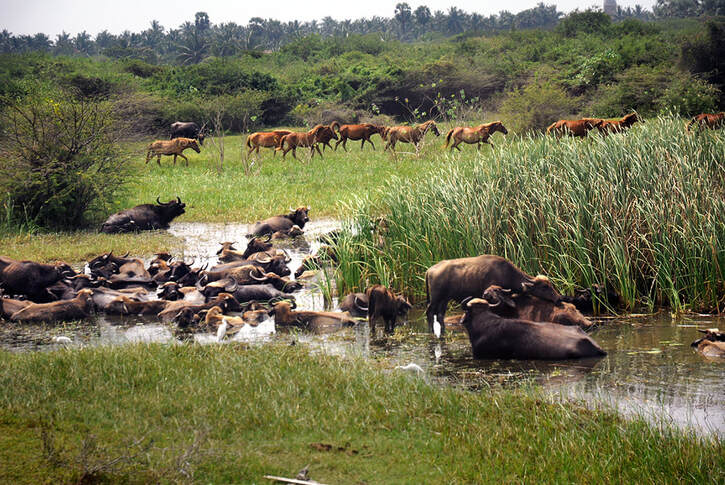
Apart from Delft Island, Mannar Island is the only place in Sri Lanka where you can observe freely roaming horses. The best place to spot feral horses is Mannar Island's rich wetland just west of Mannar City. Apart from wild horses and donkeys, plenty of birds - including seasonal flocks of Flamingos - are attracted by the freshwater of the tiny Korakulum wetland. Fishing cat, a rare species, has been observed in this wetland area, too.
Talaimannar in the far north of Mannar Island
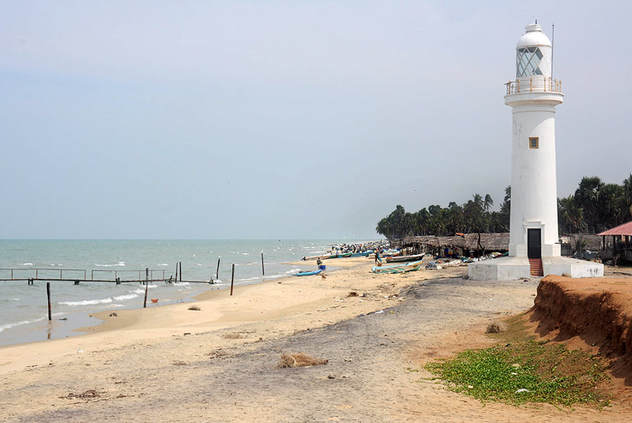
Talaimannar, 25 km to the northwest of Mannar city at the opposite end of the island, is a small fisherman village. The northernmost point of Mannar Island is marked by a British lighthouse and the Talaimannar Pier. In 1914, a ferry service from India‘s Danushkodi Point on Rameshvaram Island was launched by the British, linking the railway stations of Danushkodi and Talaimannar Jetty, which was the terminus of the railway line from Colombo. The ferry service from an Indian railway station to the Talaimannar station was the easiest way for Indians to travel to the island then known as Ceylon. The British colonial administration had introduced this connection for cheaper transport of Indian labourers, tea plantation workers in particular. The pier later on was served by a station of the Ceylon Government Railway. Talaimannar Jetty was severely damaged by a cyclone in 1964. Three years after that devastating Danushkodi Cylone, a new ferry service commenced between Talaimannar Jetty and a newly contructed pier at Rameshvaram Island. It was operated three times a week. In the 1984, during the early stage of the Sri Lankan civil war, the ferry service terminated, it has not been resumed ever since.
Adam's Bridge alias Rama Setu
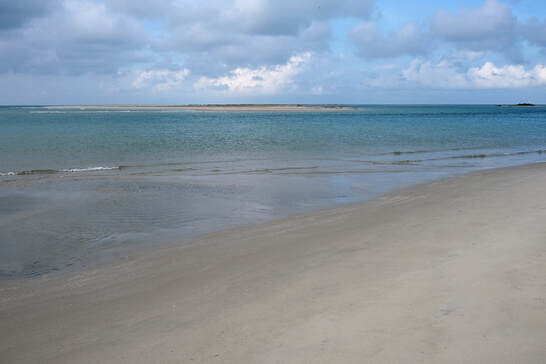
Tailaimannar is said to be the most windy place in Sri Lanka. Not surprisingly, Talaimannar is a kitesurfing destination, though not as famous as the island of Kalpitiya.
One important point of interest is the westernmost spit of Mannar Island, located in 8km distance by road from Talaimannar. This sandy cape is the beginning of the Rama Setu, also known as Adam‘s Bridge, a 25 km long chain of sandbanks and limestone shoals between Mannar and India‘s Rammeshvaram Island. It is believed to have been built as a bridge by Lord Rama, when his monkey army had to cross the Ocean from India to liberate Rama‘s wife Sita, who was held captive on the island of Lanka by Ravana, a mighty demon king. In contrast, Muslims believe that the connection was built by the first human being, Adam. This is why the chain of sandbanks and shoals between Sri Lanka and India is also known as Adam's Bridge.
8 sandy islets belong to Sri Lanka and the others to India. Two of them can be seen easily from the viewpoints near Rama's Bridge alias Adam's Bridge. Ironically, one of the sanddunes of the Rama Setu is devided, the western part of the dune belonging to India and the eastern one to Sri Lanka. Thus, on this islet there is actually a land border of the two states, although Sri Lanka is an island nation. It‘s surmised to be the shortest land border anywhere in the world, just 50 m long.
One important point of interest is the westernmost spit of Mannar Island, located in 8km distance by road from Talaimannar. This sandy cape is the beginning of the Rama Setu, also known as Adam‘s Bridge, a 25 km long chain of sandbanks and limestone shoals between Mannar and India‘s Rammeshvaram Island. It is believed to have been built as a bridge by Lord Rama, when his monkey army had to cross the Ocean from India to liberate Rama‘s wife Sita, who was held captive on the island of Lanka by Ravana, a mighty demon king. In contrast, Muslims believe that the connection was built by the first human being, Adam. This is why the chain of sandbanks and shoals between Sri Lanka and India is also known as Adam's Bridge.
8 sandy islets belong to Sri Lanka and the others to India. Two of them can be seen easily from the viewpoints near Rama's Bridge alias Adam's Bridge. Ironically, one of the sanddunes of the Rama Setu is devided, the western part of the dune belonging to India and the eastern one to Sri Lanka. Thus, on this islet there is actually a land border of the two states, although Sri Lanka is an island nation. It‘s surmised to be the shortest land border anywhere in the world, just 50 m long.
So-Called Tomb of Adam and Eve
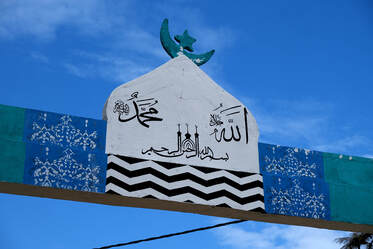
In between Talaimannar and Rama Cetu lies one of Sri Lanka's most important Muslim pilgrimage sites. It's often called the Tomb of Adam and Eve, as according to Muslim legends Adam and Eve after leaving paradise set their first steps on Adam's Peak and later on left the island via the Adam's Bridge constructed by the first human beings. Actually, the designations "Adam's Peak" and "Adam's Bridge were originally Muslim inventions, Christians borrowed the names only later on. The tombs are 40 m long, and this is explained by Adam and Eve being giants originally.
However, the historic background of the tomb is a different one and of no less significance for Muslims. Actually, the two large tombs covered with the green flags of Islam honour the Muslim missionary Salauddin and his sister, who arrived from India in the 10th century and travelled to many coastal towns of Sri Lanka, where they are said to have converted numerous locals and to have founded Muslim parishes. Afterwards, they returned to the place near Adam's Bridge, where they once had entered Sri Lanka and settled down and died here.
It is often allowed to take photos of the actual tombs, too. Please ask for permission first. But out of respect for Muslim traditions that often prohibit to make images of religious figureheads and sacred tombs, we decided only to publish the board above the main entrance of the compound. This is what you see when you travel from Talaimannar to Adam's Bridge alias Rama Setu.
However, the historic background of the tomb is a different one and of no less significance for Muslims. Actually, the two large tombs covered with the green flags of Islam honour the Muslim missionary Salauddin and his sister, who arrived from India in the 10th century and travelled to many coastal towns of Sri Lanka, where they are said to have converted numerous locals and to have founded Muslim parishes. Afterwards, they returned to the place near Adam's Bridge, where they once had entered Sri Lanka and settled down and died here.
It is often allowed to take photos of the actual tombs, too. Please ask for permission first. But out of respect for Muslim traditions that often prohibit to make images of religious figureheads and sacred tombs, we decided only to publish the board above the main entrance of the compound. This is what you see when you travel from Talaimannar to Adam's Bridge alias Rama Setu.
Mainland near Mannar City
The reason for Mannar's importance in the history of ancient and medieval Indian Ocean trade is its strategic location at the bottleneck passage between India and Sri Lanka. Actually, a bar consisting of the two islands of Mannar (Sri Lanka) and Rameshvaram (India) and 18 islets in between them (see Rama Setu section above) forms a barrier not passable for ships because of the shoals between the islands and islets. The naturally deepest part of this shoal and therefore the best passage is not located between India and Sri Lanka but is actually the small strait just at Mannar city's fishing port in between Mannar Island and mainland Sri Lanka. It's exactly where the bridge is now crossing the strait to reach Mannar City, at the western end of the long causeway. So in ancient times ships taking the direct route from the Arabian Sea to the Gulf of Bengal had to sail through this small strait in front of Mannar. Actually, the passage was also too small for larger ships then. So Mannar - or, more precisely, the mainland town of Manthai just opposite of Mannar city - became an entrepot, where goods from both directions arrived and went ashore and were exchanged in the port town.
Manthai - or Mahathitta, as it is known in the ancient Pali Chronicles, or Mattota, as it is called in Tamil - was by far the most important port of ancient Sri Lanka, a large city second or third in size only to Anuradhapura and Tissamharama during the period prior to the rise of Polonnaruwa. Almost nothing can be seen from the historic town today, as it was not a temple area but a trade center with almost all buildings made of perishable materials. However, Manthai alias Mahathitta alias Mattota is definitely the most important archaeological site at the coasts of Sri Lanka, with several important findings indicating long-distance trade connections to Rome and China. Mahathitta was not a port in the modern sense, it had no quai installations. Instead, the trade ships were anchoring in the bay and their goods carried to town on small barges.
Manthai - or Mahathitta, as it is known in the ancient Pali Chronicles, or Mattota, as it is called in Tamil - was by far the most important port of ancient Sri Lanka, a large city second or third in size only to Anuradhapura and Tissamharama during the period prior to the rise of Polonnaruwa. Almost nothing can be seen from the historic town today, as it was not a temple area but a trade center with almost all buildings made of perishable materials. However, Manthai alias Mahathitta alias Mattota is definitely the most important archaeological site at the coasts of Sri Lanka, with several important findings indicating long-distance trade connections to Rome and China. Mahathitta was not a port in the modern sense, it had no quai installations. Instead, the trade ships were anchoring in the bay and their goods carried to town on small barges.
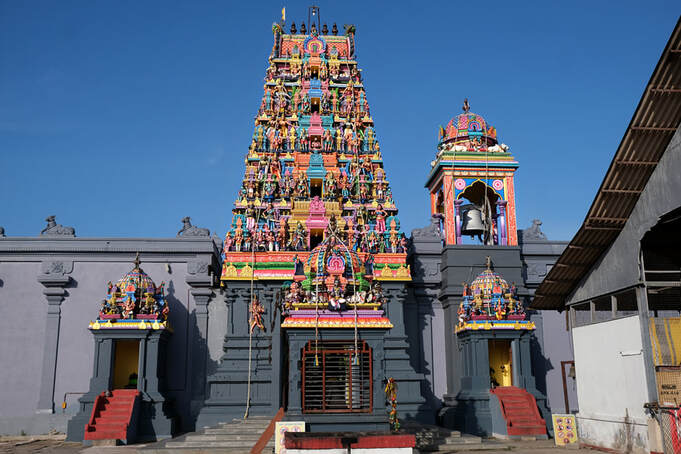
Today's village near the ancient Mahathitta port town is Ketishvaram (also spelt Keteeswaram). It's famous for one of the four major Shiva temples in Sri Lanka, namely Thiruketishvaram. The illustrous Hindu Kovil is said to predate the historical period and is considered to be the most ancient sacred site on the island.
In the classical era of Tamil history (Sangam age and Pallava and Chola periods), the Pandya kings from mainland India contributed to the maintanence of the important pilgrimage site of Thiruketishvaram. But like many other Buddhist and Hindu temples along the shores of the island, the Thiruketishvaram Temple was destroyed by Portuguese fanatics on order of the bishop of Goa.
In the 19th century it was no less than Arumuka Navalar, the most important Hindu apologist and reformer of Sri Lanka's Tamil community, who commenced a reconstruction initiative for a new temple at this ancient site. However, the actual construction works started only one generation after his death. Today's architecture of the temple is held in the traditional Drawidian style, with a Gopuram (gatehouse) typically being the most prominent part of the entire compound. The Gopuram symbolizes Mount Meru, the abode of the gods, with their celestial palaces on different levels of the mountain. The colourful style is the typical fashion of modern Tamil temples.
In the classical era of Tamil history (Sangam age and Pallava and Chola periods), the Pandya kings from mainland India contributed to the maintanence of the important pilgrimage site of Thiruketishvaram. But like many other Buddhist and Hindu temples along the shores of the island, the Thiruketishvaram Temple was destroyed by Portuguese fanatics on order of the bishop of Goa.
In the 19th century it was no less than Arumuka Navalar, the most important Hindu apologist and reformer of Sri Lanka's Tamil community, who commenced a reconstruction initiative for a new temple at this ancient site. However, the actual construction works started only one generation after his death. Today's architecture of the temple is held in the traditional Drawidian style, with a Gopuram (gatehouse) typically being the most prominent part of the entire compound. The Gopuram symbolizes Mount Meru, the abode of the gods, with their celestial palaces on different levels of the mountain. The colourful style is the typical fashion of modern Tamil temples.
Thalladi Wetlands - alias Vankalai Bird Sanctuary
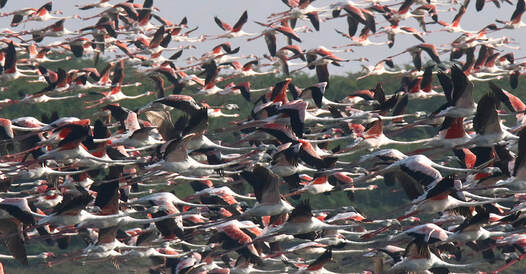 photo by courtesy of Mr. Vimal Kumutha, El Shaddai Guesthouse, Mannar
photo by courtesy of Mr. Vimal Kumutha, El Shaddai Guesthouse, Mannar
Thalladi is the name of a small town and a wetland area. The town is located on mainland Sri Lanka just opposite Mannar Island. It's in Thalladi that the causeway from Mannar city reaches a Y-junction, where the A32 to Jaffna branches off from the A14, which crosses Mannar Island from Talaimannar to Mannar City and then leads to Medawachchiya on the mainland, from where A9 runs to Mihintale, Dambulla, and Kandy.
The coastal wetland of Thalladi, also known as Vankalai Bird Sanctuary, is mainly situated to the south of the first kilometers of the said A14. The sanctuary covers an area of almost 50 sqare kilometers. At the beginning and the end of the migratory season, migrant birds arriving from India and continuing their journey to other areas of Sri Lanka make landfall on Mannar Island and Thalladi wetlands.
Some birds choose Thalladi as their final destination in Sri Lanka. In particcular, large stocks of flamingos settle down at Thalladi during for the months of February and March. They seem to have changed their habits. In earlier decades, they tended to make all the way down to Bundala in the deep south of Sri Lanka. But in the two recent decades, much less flamingos were sighted in Bundala and more in Thalladi.
Talladi's abundance in biodiversity might be the reason why it is considered a so-called Sanjiwani Drop, of which five exist in and around Sri Lanka. According to a famous Ramayana episode, Hanuman had been sent to Himalaya to fetch medical herbs to treat the injured heros of the epic, Rama and his brother Lakshmana. Because he had forgotten the long names of the herbs, Hanuman brought the entire Mount Dronagiri from the Himalays, the place of origin of the mythical Sanjiwani plant, which can cure all diseses. According to local legends some parts of Mount Dronagiriy slipped and fell down at five different places, one of them being Thalladi.
The coastal wetland of Thalladi, also known as Vankalai Bird Sanctuary, is mainly situated to the south of the first kilometers of the said A14. The sanctuary covers an area of almost 50 sqare kilometers. At the beginning and the end of the migratory season, migrant birds arriving from India and continuing their journey to other areas of Sri Lanka make landfall on Mannar Island and Thalladi wetlands.
Some birds choose Thalladi as their final destination in Sri Lanka. In particcular, large stocks of flamingos settle down at Thalladi during for the months of February and March. They seem to have changed their habits. In earlier decades, they tended to make all the way down to Bundala in the deep south of Sri Lanka. But in the two recent decades, much less flamingos were sighted in Bundala and more in Thalladi.
Talladi's abundance in biodiversity might be the reason why it is considered a so-called Sanjiwani Drop, of which five exist in and around Sri Lanka. According to a famous Ramayana episode, Hanuman had been sent to Himalaya to fetch medical herbs to treat the injured heros of the epic, Rama and his brother Lakshmana. Because he had forgotten the long names of the herbs, Hanuman brought the entire Mount Dronagiri from the Himalays, the place of origin of the mythical Sanjiwani plant, which can cure all diseses. According to local legends some parts of Mount Dronagiriy slipped and fell down at five different places, one of them being Thalladi.
Our Partner in Mannar City: El Shaddai Homestay and Guesthouse
Because of the hospitality and familial atmosphere and authentic local food and helpful travel advice we recommend El Shaddai Guesthouse for a stay on Mannar Island. El Shaddai is run by Mr. Vimal Kumutha, whose family lives in a wing of the same building. This allows visitors to come in touch with a local Tamil family easily. In particular, El Shaddai is recommendable for families traveling with children, as contact to children of three different age groups is possible here.
|
|
El Shaddai guesthouse is located in the western outskirts of Mannar City, in 3 km distance from the central bus station. The location is quiet, without traffic noise.
For budget travelers, El Shaddai offers affordable rates for accommodation only. Breakfast costs 2.00 Dollars additionally and dinner is available for 5.00 Dollars. The dinner will be a traditional rice and curry with nine different curries, which is extraordinarily rich in variety. When booking a room directly or via booking platforms, please make sure that you avoid misunderstandings concerning room category and meal plan. Whether A/C or breakfast or dinner respectively is included or not included in your rate will be transparently marked by El Shaddai in advance. Alternatively, you can book a room for overnight stays only and after arrival ask for dinner or an A/C upgrade for the respective extra charges |
